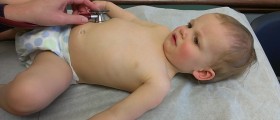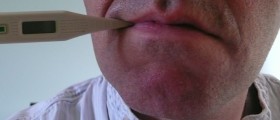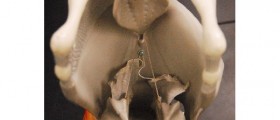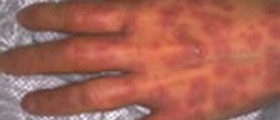
Walking pneumonia is the type of pneumonia that does not cause serious symptoms and signs comparing to majority of pneumonia cases. The condition is mild and does not require hospitalization. Many patients completely recover from walking pneumonia without confirmation of the illness.Walking pneumonia is often caused by Mycoplasma pneumoniae.Clinical Characteristics of Walking Pneumonia
Walking pneumonia is also known under the name atypical pneumonia. The explanation is quite simple. The symptoms and signs are mild which is not characteristic for typical pneumonia. Patients are only in rare occasions confined to bed or they require hospitalization. Many of them continue working and carry out all the regular routines.
Symptoms and signs of walking pneumonia develop 15-25 days after the exposure to the bacteria. They develop gradually within 2-4 days. The condition typically features with cough that may come in violent spasm. The cough is generally not productive. Additional symptoms resemble flu and include fever accompanied by chills, sore throat, headache and fatigue. Weakness may continue even after all the initial symptoms have withdrawn. And finally, runny nose, earache and ear infection may also occur in patients suffering from walking pneumonia.
Who Gets Walking Pneumonia?
Walking pneumonia may affect people of all ages. Still, if the infection is caused by Mycoplasma pneumoniae it predominantly affects older children and adult people younger than 40.
The bacteria is easily transmitted among people who work in crowded places. The condition is contagious and easily spread via droplets from the nose and throat. The risk of contracting infection increases when these droplets are ejected by sneezing or coughing.Diagnosing Walking Pneumonia
It is not unusual for the condition to stay undiagnosed because of its mild course and because people often do not seek for medical help. However, those patients who go to the doctor are examined and the doctor investigates their medical history. After physical examination the doctor listens to the lungs with a stethoscope and may suggest a chest X-ray (a powerful tool in diagnosing pneumonia) and blood tests. All the previously mentioned helps in setting of the definitive diagnosis.
Treatment for Walking Pneumonia
As it is the case with any other pneumonia caused by bacteria, walking pneumonia is also treated with antibiotics. Patients feel much better a few days after they start treatment with these powerful antimicrobial agents. Additional help is obtained from symptomatic treatment.
Even though there is no vaccine for walking pneumonia the condition can be prevented. The body is more resistant to infections if one has proper nutrition, rest and regular physical activity. It is also essential to avoid contact with people who are ill or may be suffering from walking pneumonia.

















Your thoughts on this
Loading...